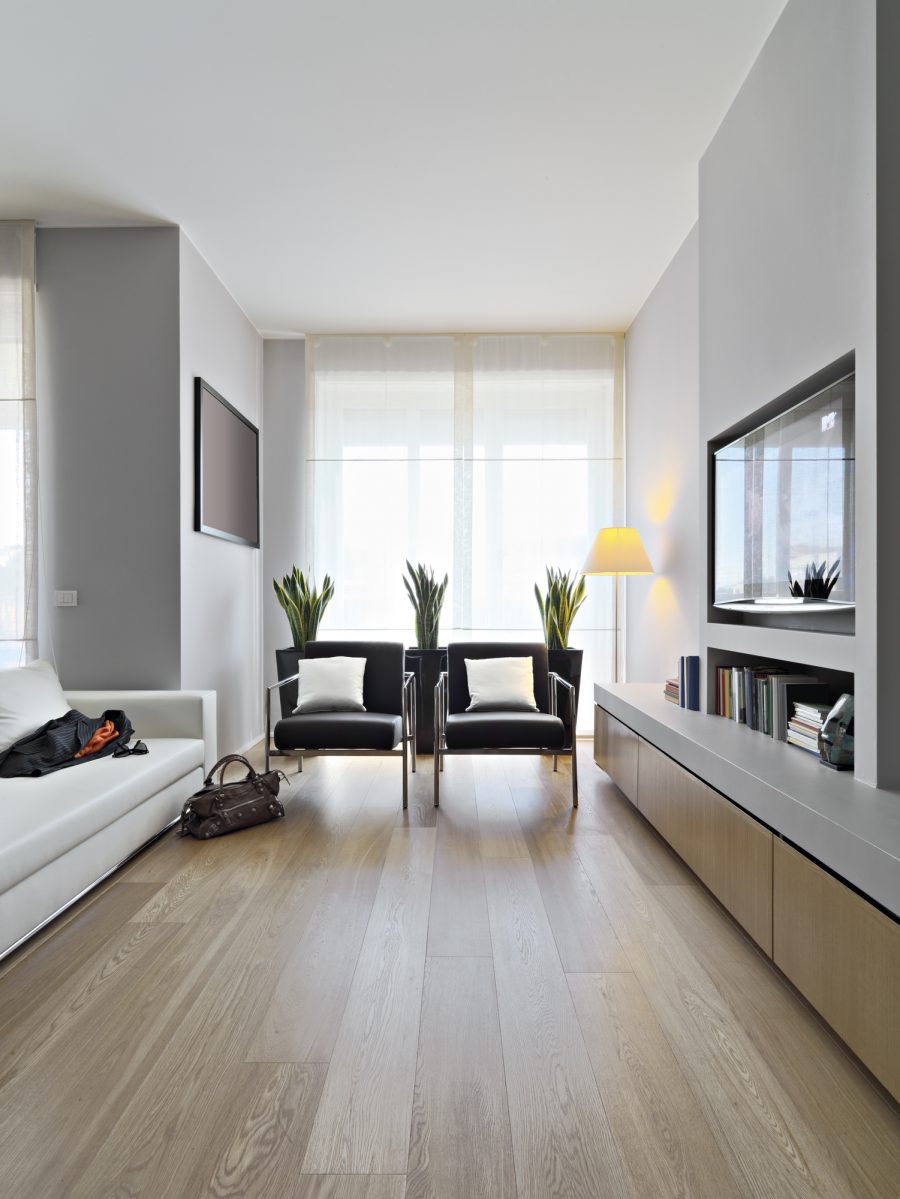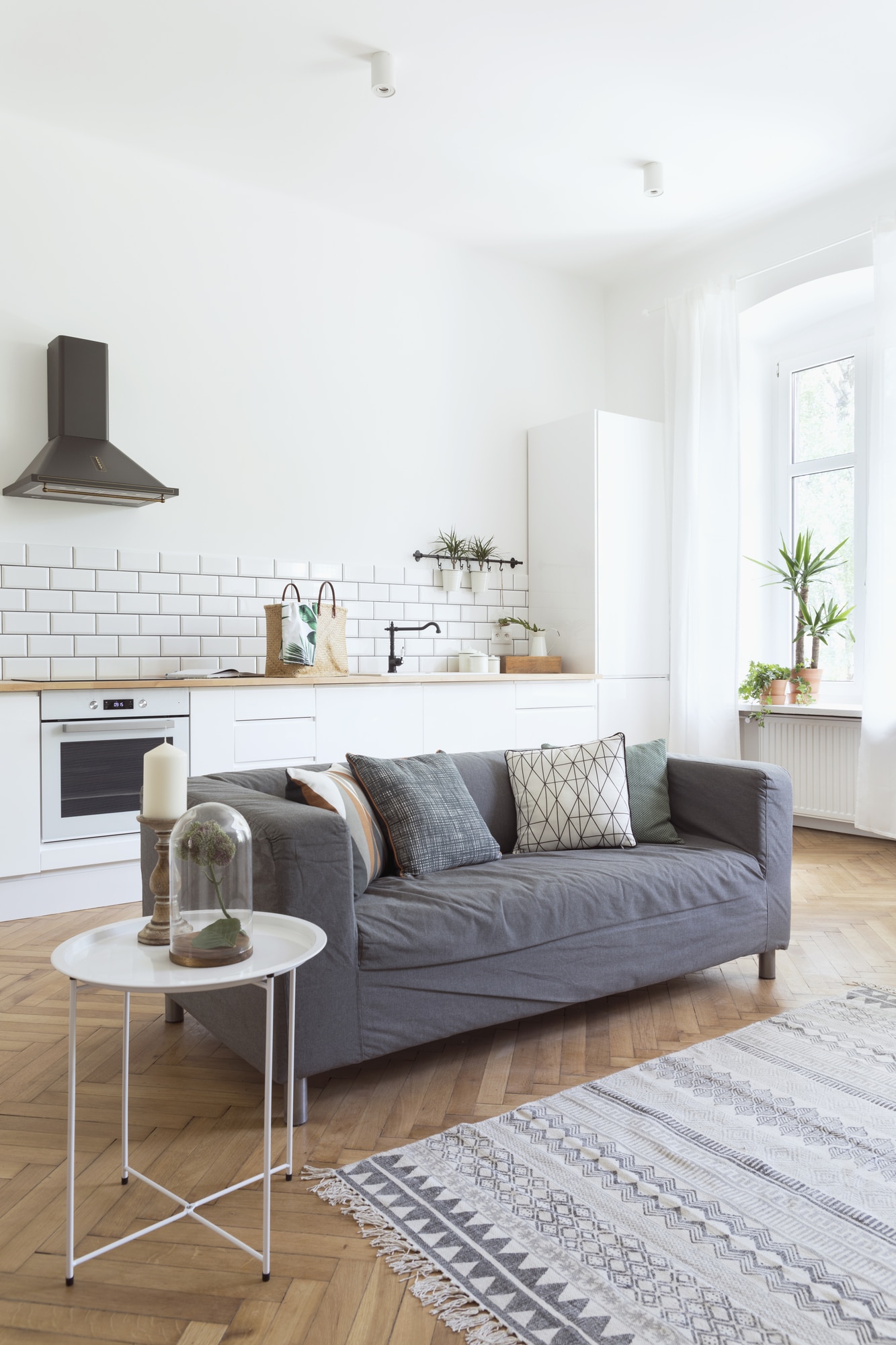If you’re remodeling or renovating your home, then choosing the right flooring is important. Just like the walls, your flooring is a backdrop for the rest of your interior decoration.
As well as having an impact on the look of your room, the floor you choose will impact how practical each room is too. Here is my flooring guide, to help you find the perfect flooring.

Flooring Guide
The flooring that you choose will depend on the room you intend to fit it in. The ideal floor for your living room won’t be perfect for your kitchen. The style of your home could also play a part in your decision, especially if you’re trying to match existing flooring in a period property. Your budget will need to be considered too. Don’t forget to factor in the cost of the flooring, and the labor to fit it.
Kitchen Flooring
Take into account the layout of your kitchen and the way you use the room. If you have an open plan kitchen diner, then two different flooring types for each area can work well.
The two kinds of flooring visually define the spaces and can be used to make the kitchen more practical and the dining area more social. Use something like a carpet in the dining area and cement tile in the kitchen. You could also try out luxury vinyl flooring if you would liked to spice things up.
The same idea can work in larger open plan layouts too, to separate out living areas, dining areas, and the kitchen. Varying the flooring can break up space into more distinct zones.
How To Choose The Right Flooring?
Stain-resistant flooring that is easy to clean and is resistant to moisture is essential in the kitchen, and these qualities should be top of your priority list when choosing a kitchen floor. You want something that won’t mark, chip or crack easily.
Plan your kitchen flooring alongside the rest of the room design. Tile size or floorboard thickness will need to work with things like your kitchen units, so decide early.
Bathroom
Bathroom flooring needs to be able to withstand very high levels of moisture and deal with fluctuations of temperature. For safety, it should be non-slip and should be stain-resistant for ease of cleaning.
You might enjoy underfloor heating in the bathroom so check to see if the floor you like the idea of can be laid over this. Porcelain and ceramic tiles are the most popular choices for bathrooms, but there are lots of other options that could work just as well, such as natural stone, rubber, vinyl tile or even engineered timber.

Living Room
Living room flooring has less practical requirements than other areas, so the choice of floor is really just down your personal aesthetics. If you have an open plan living, dining and kitchen space, it can work well to define the living area as a space for relaxing in by choosing a softer flooring type.
You could do this with carpet, or by laying a large run over a timber floor. Wood flooring has a warm appearance but is easier to clean than carpet.
Carpet is the most popular choice for the living room, as it is soft and comfortable underfoot and works well for children playing on the floor.
Entrance Hall
In the entrance hall of your home, you need a floor is that is very durable and hardwearing as a lot of foot traffic comes through this area. You will also want a floor that is easy to clean and that will do a good job of hiding dirt brought in on muddy shoes or pet paws.
You could choose porcelain, ceramic, stone, or solid or engineered timber. Natural fiber flooring is also a good choice for the hallway or the stairs. Coir and seagrass look warmer than tile but also stand up well to being used in high traffic areas of the home.
Utility Room Flooring Guide
Much like your kitchen and entrance hall floors, a utility room needs to have a floor that is very stain resistant. Choose carefully, as some stones, even if they have been sealed, will react to some kinds of bleaches or detergents.
You could choose porcelain or ceramic tile, as these are both very resistant to staining. Linoleum, vinyl, and rubber are also good choices, as there are all easy to clean and stand up well to lots of foot traffic.
Bedroom Flooring
Like your living room, you can choose pretty much any flooring you’d like in your bedroom. We’re all quite often barefoot in the bedroom, so a good choice would be something soft and comfortable underfoot.
A plush carpet with a thick later of underlay will feel nice under your feet when you get up in the morning. Treat yourself to something that feels a little luxurious for the best start to your day.
For children’s room, you might want to consider something easier to clean, but lay plenty of rugs if you do, to protect little knees during playtime.

Fitting A New Floor
Some types of flooring are relatively easy to fit yourself if you’re handy at DIY. Porcelain and ceramic tiles are easy to fit yourself, as is engineered timber.
Fitting carpet, natural flooring or real stone, however, is a lot more difficult and is best left to the professionals. Call a fitter to install these floors for you.
Most suppliers who sell flooring will also offer a fitting service, and will usually charge per square foot. If you’re fitting a floor in a small area, bear in mind that most suppliers will have a minimum fitting charge.
Some floors are more challenging to fit. For example, natural stone floors take skill to lay properly, which can mean a much higher price for a professional fitter to do the job for you.
